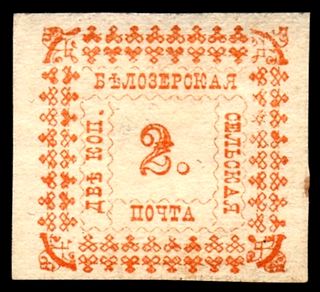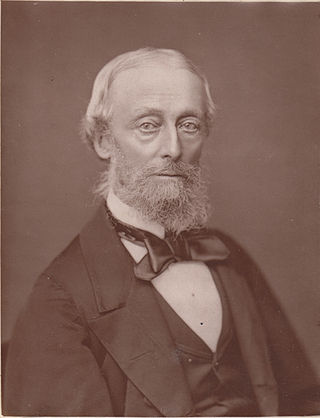Related Research Articles

Philately is the study of postage stamps and postal history. It also refers to the collection and appreciation of stamps and other philatelic products. While closely associated with stamp collecting and the study of postage, it is possible to be a philatelist without owning any stamps. For instance, the stamps being studied may be very rare or reside only in museums.

Stamp collecting is the collecting of postage stamps and related objects. It is an area of philately, which is the study of stamps. It has been one of the world's most popular hobbies since the late nineteenth century with the rapid growth of the postal service, as a stream of new stamps was produced by countries that sought to advertise their distinctiveness through their stamps.

A cancellation is a postal marking applied on a postage stamp or postal stationery to deface the stamp and to prevent its reuse. Cancellations come in a huge variety of designs, shapes, sizes, and colors. Modern cancellations commonly include the date and post office location where the stamps were mailed, in addition to lines or bars designed to cover the stamp itself. The term "postmark" refers specifically to the part that contains the date and posting location, but the term is often used interchangeably with "cancellation" as it may serve that purpose. The portion of a cancellation that is designed to deface the stamp and does not contain writing is also called the "obliteration" or killer. Some stamps are issued pre-cancelled with a printed or stamped cancellation and do not need to have a cancellation added. Cancellations can affect the value of stamps to collectors, positively or negatively. Cancellations of some countries have been extensively studied by philatelists, and many stamp collectors and postal history collectors collect cancellations in addition to the stamps themselves.

Philatelic literature is written material relating to philately, primarily information about postage stamps and postal history.

The postal and philatelic history of Canada concerns postage of the territories which have formed Canada. Before Canadian confederation, the colonies of British Columbia and Vancouver Island, Prince Edward Island, Nova Scotia, New Brunswick and Newfoundland issued stamps in their own names. The postal history falls into four major periods: French control (1604–1763), British control (1763–1841), colonial government control (1841–1867), and Canada, since 1867.

The Royal Philatelic Collection is the postage stamp collection of the British royal family. It is the most comprehensive collection of items related to the philately of the United Kingdom and the British Commonwealth, with many unique pieces. Of major items, only the British Guiana 1c magenta is missing from the collection of British Imperial stamps.

L.N. and M. Williams were a philatelic writing partnership made up of brothers Leon Norman Williams and Maurice Williams (1905–1976).

In general, philatelic fakes and forgeries are labels that look like postage stamps but have been produced to deceive or defraud. Learning to identify these can be a challenging branch of philately.

Edward Benjamin Evans, a British army officer also known as "Major Evans", was a distinguished philatelist, stamp collector, and philatelic journalist. His philatelic specialization included Mauritius, the Confederate States of America, the Mulready envelopes, and the Indian feudatory states.

The Chalon Head is the name of a number of postage stamp series whose illustration was inspired by a portrait of Queen Victoria by Alfred Edward Chalon (1780–1860).

Walter Morley (1863–1936) was a pioneering English philatelist, stamp dealer and philatelic author.

The Roll of Distinguished Philatelists (RDP) is a philatelic award of international scale, created by the Philatelic Congress of Great Britain in 1921. The Roll consists of five pieces of parchment to which the signatories add their names.

A Zemstvo stamp was a Russian local stamp used widely in rural areas from 1865. It was named after the Zemstvo local administrative districts or uyezds that were created in 1864. The stamps ceased at about the time of the 1917 Russian revolution.

Mount Brown was an early British philatelist and the compiler of only the second published stamp catalogue in the English language. Brown attended the City of London School and started to collect stamps in around 1860.

Frederick William Booty was an English artist who was also the author of the first postage stamp catalogue in English, and the first illustrated stamp catalogue anywhere.

The Crawford Library is a library of early books about philately formed between 1898 and 1913 by James Lindsay, 26th Earl of Crawford. By the time of his death in 1913, Crawford was thought to have amassed the greatest philatelic library of his time. Today, the library is part of the British Library Philatelic Collections.

Charles William Viner A.M., Ph.D., was a British philatelist who was a founding member of the Philatelic Society, London, later to become the Royal Philatelic Society London, and who was present at the initial meeting of the society on 10 April 1869, and serving as its Secretary from 1871 to 1874. His obituary in The London Philatelist referred to him as the "Father of Philately" and elsewhere he was described as the vieille garde of philately having been actively collecting and writing about stamps since 1860. In 1921 he was entered on the Roll of Distinguished Philatelists as one of the founding Fathers of philately.

Edward Loines Pemberton was a pioneering philatelist and stamp dealer who was a leading advocate of the scientific school of philately and a founding member of The Philatelic Society, London, now The Royal Philatelic Society London. Pemberton was entered on the Roll of Distinguished Philatelists in 1921 as one of the fathers of philately. He was born in New York City but educated in Britain by relatives when his parents died shortly after his birth. His son, Percival Loines Pemberton (1875-1949) was also an eminent philatelist.

The Halfpenny Yellow is the first postage stamp issued by the Crown Colony of Malta. Depicting Queen Victoria, it was only valid for local postage and it was originally issued on 1 December 1860. It was the only stamp issued by Malta for two and a half decades, and during this period various reprints were made with differences in colour shade, perforation and watermark. When control of Malta's postal service was transferred to the island's colonial government on 1 January 1885, the stamp was withdrawn and it was replaced by a set of definitive stamps.
References
- 1 2 Who Was Who in British Philately Archived 2011-07-13 at the Wayback Machine , Association of British Philatelic Societies, 2010. Retrieved 6 July 2011.
- ↑ "Answers to Correspondents" in The Stamp-Collector's Magazine, Vol. V, 1 October 1867, p.160.
- ↑ "Reviews" in The National Postage Stamp Express, 15 March 1864, p.13.
- ↑ "Reviews of Postal Publications" in The Stamp-Collector's Magazine, Vol. III, 1 January 1865, p.12.